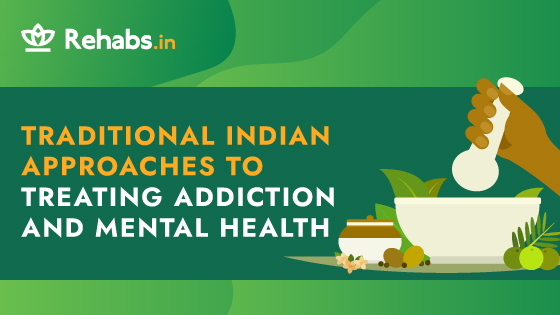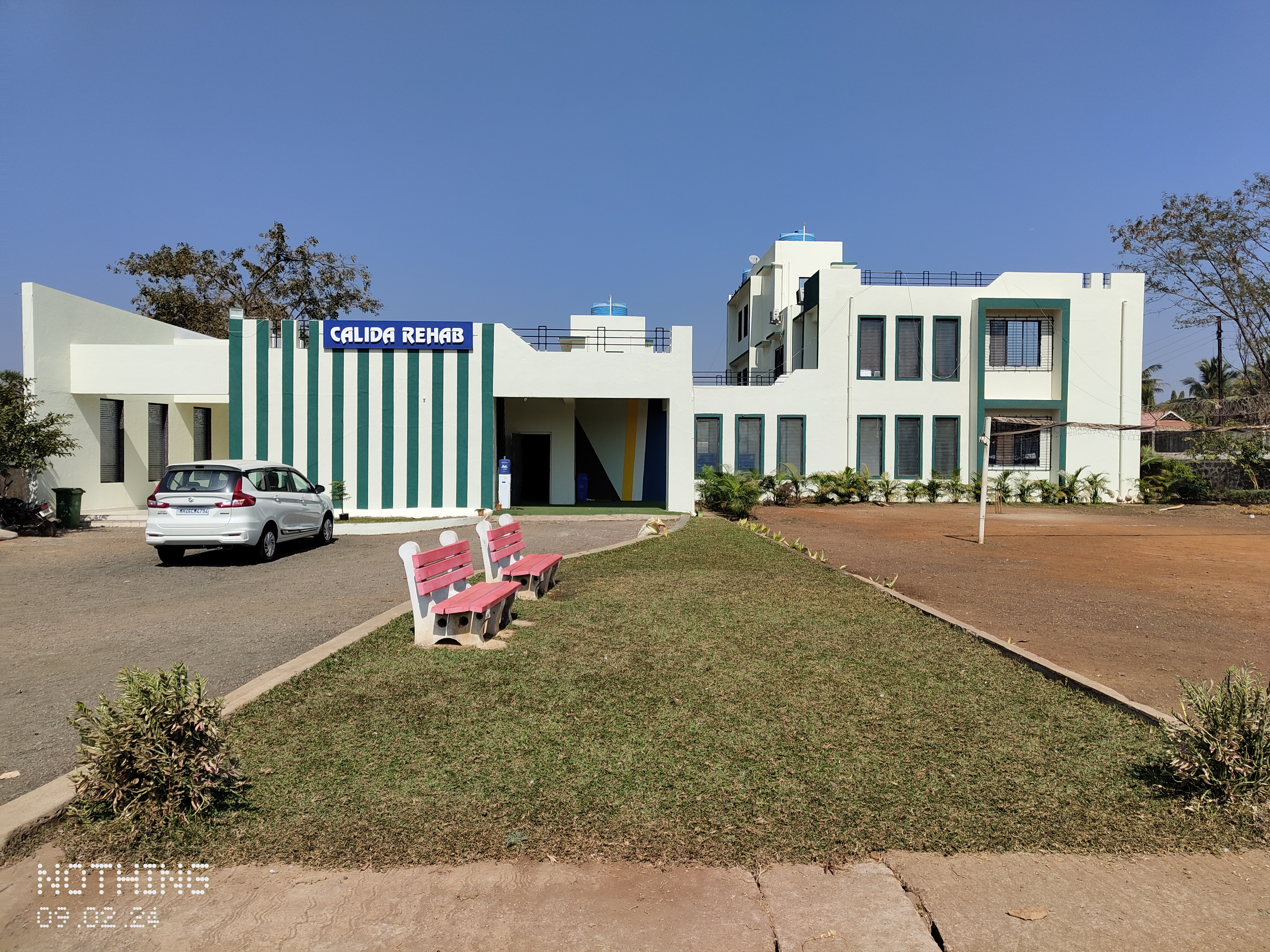Traditional Indian Approaches to Treating Addiction and Mental Health

In recent years, traditional Indian healing practices have been experiencing a resurgence in popularity and recognition. Many of these age-old healing methods, such as Ayurveda, yoga, and meditation, were pushed into the background as modern medicine and therapy gained prominence. However, there has been a noticeable shift towards embracing and promoting these ancient practices once again.
People are increasingly drawn to the holistic approach and natural remedies offered by traditional Indian healing systems. Moreover, as more scientific research delves into the efficacy of these practices, their benefits are being validated and acknowledged by the mainstream medical community. This revival highlights India’s rich cultural heritage and provides individuals with alternative options for improving their health and well-being.
Introduction to Traditional Indian Healing Practices
India boasts a rich heritage in natural and holistic healing methods known as complementary or alternative practices (CAM). With its diverse cultural heritage, India is home to a plethora of CAM practices that have been passed down through generations.
These include Ayurveda, which emphasises a balance between mind, body, and spirit through herbal remedies and lifestyle adjustments; Yoga, a practice that integrates physical postures, breathing techniques, and meditation for overall well-being; Unani, a system of medicine that uses herbal medicines, dietary adjustments, and lifestyle recommendations; Siddha, an ancient system focusing on herbal medicine, yoga, and spiritual practices; and Homeopathy, which uses highly diluted substances to stimulate the body’s natural healing abilities. Together, these CAM practices form the AYUSH system, representing India’s comprehensive approach to holistic health and wellness.
Traditional practices hold significant relevance in contemporary mental health and addiction treatment due to their holistic approach. Unlike mainstream medicine, which often focuses solely on treating symptoms, traditional practices view the body, mind, and soul as interconnected elements of an individual’s well-being. This perspective allows these practices to delve deeper into the root causes of mental health issues and addictions, addressing underlying emotional, psychological, and spiritual imbalances.
Techniques such as mindfulness meditation, yoga, acupuncture, herbal remedies, and energy healing not only alleviate symptoms but also promote long-term healing and resilience by restoring harmony within the entire being. Incorporating traditional practices into modern treatment approaches offers a more comprehensive and personalised approach, leading to improved outcomes and overall well-being for individuals seeking mental health and addiction support.
Ayurveda: The Science of Life
Ayurveda, an ancient Indian healing system, is deeply rooted in the concept of Trigunas, which are fundamental energies that govern all aspects of life. These Trigunas are known as Sattva (purity, harmony), Rajas (activity, passion), and Tamas (inertia, darkness). According to Ayurveda, achieving balance among these three qualities is essential for overall well-being in mind, body, and spirit.
Sattva represents purity, clarity, and harmony. It is associated with virtues such as compassion, love, and peace. A Sattvic mind is calm, focused, and balanced. In Ayurveda, a Sattvic diet includes fresh fruits, vegetables, whole grains, and pure water, promoting physical health and mental clarity.
Rajas, on the other hand, embodies activity, passion, and ambition. While Rajas can drive productivity and creativity, an excess of this quality can lead to stress, restlessness, and imbalances. Ayurveda suggests moderation in Rajasic activities and encourages practices like yoga and meditation to calm the mind and balance energy.
Tamas represents inertia, dullness, and ignorance. It is associated with qualities such as laziness, lethargy, and attachment. Ayurveda advises against excessive Tamasic behaviours and promotes activities that bring lightness, clarity, and positivity to life.
Ayurveda offers holistic treatments for addiction and mental health issues, focusing on restoring balance in the mind, body, and spirit. Some Ayurvedic treatments commonly used for addiction and mental health include:
- Herbal Remedies: Ayurvedic herbs like Ashwagandha, Brahmi, Shankhpushpi, and Jatamansi are known for their adaptogenic and calming properties. They help reduce stress, anxiety, and cravings associated with addiction while promoting mental clarity and emotional balance.
- Panchakarma Therapy: Panchakarma procedures, such as Shirodhara (continuous pouring of herbal oils on the forehead), Abhyanga (therapeutic oil massage), and Basti (medicated enemas), detoxify the body, calm the mind, and restore doshic balance. These therapies can be beneficial in addressing the physical and mental aspects of addiction.
- Yoga and Pranayama: Yoga postures (asanas), breathing techniques (pranayama), and meditation practices help improve mental focus, reduce stress, and enhance overall well-being. They also support self-awareness and self-control, which are essential for managing addictive behaviours.
- Dietary Modifications: Ayurveda emphasises the importance of a balanced diet tailored to an individual’s dosha constitution. Foods that promote mental clarity, such as fresh fruits, vegetables, whole grains, and herbal teas, are recommended. Avoiding stimulants like caffeine, alcohol, and processed foods is also advised.
- Lifestyle Recommendations: Ayurvedic lifestyle practices, including maintaining a regular daily routine (dinacharya), practising mindfulness, getting adequate sleep, and engaging in fulfilling activities, contribute to mental and emotional stability. These practices support individuals in overcoming addictive tendencies and improving mental health.
- Counselling and Psychotherapy: Ayurvedic practitioners may also incorporate counselling, cognitive-behavioural therapy (CBT), or other psychotherapeutic approaches to address underlying emotional issues, trauma, or negative thought patterns contributing to addiction and mental health challenges.
Yoga and Meditation: Tools for Mindfulness and Recovery
Studies indicate that Yoga merits consideration as a complementary or alternative approach to medical therapy for managing stress, anxiety, depression, and various mood disorders. This is because Yoga has demonstrated the ability to enhance overall well-being, promote relaxation, boost self-confidence, improve body image, enhance efficiency, foster better interpersonal relationships, increase attentiveness, reduce irritability, and cultivate a more positive outlook on life.
Let’s look at some specific yoga asanas (postures) and meditation techniques that can be beneficial for individuals dealing with substance abuse and mental health challenges:
- Balasana (Child’s Pose): This gentle resting pose helps calm the mind, releases tension in the back and shoulders, and promotes relaxation. It can be particularly soothing for individuals experiencing anxiety or stress.

Source: yogajournal.com
- Vrikshasana (Tree Pose): This standing balance pose improves focus, concentration, and stability. Practising Vrikshasana can help individuals regain a sense of control and balance, which is beneficial for managing addictive behaviours.
Source: yogajournal.com
- Savasana (Corpse Pose): Savasana is a relaxation pose that promotes deep rest and rejuvenation. It can help reduce anxiety, improve sleep quality, and allow individuals to let go of tension and negative thoughts.
Source: yogajournal.com
- Bhujangasana (Cobra Pose): This backbend pose helps open the chest, stretch the spine, and improve mood by releasing endorphins. It can also enhance feelings of self-confidence and empowerment.

Source: yogajournal.com
- Mindfulness Meditation: Mindfulness meditation involves focusing on the present moment without judgment. It can help individuals observe their thoughts and emotions without getting overwhelmed, manage cravings, and develop a greater sense of self-awareness.
- Loving-Kindness Meditation (Metta Meditation): This meditation practice involves cultivating feelings of compassion, love, and kindness towards oneself and others. It can promote emotional healing, reduce feelings of isolation, and improve overall well-being.
- Yoga Nidra (Yogic Sleep): Yoga Nidra is a guided meditation that induces deep relaxation and helps individuals access a state of inner calmness. It can be beneficial for reducing anxiety, improving sleep quality, and enhancing self-acceptance.
It’s important for individuals dealing with substance abuse and mental health challenges to practice these yoga asanas and meditation techniques under the guidance of a qualified instructor or healthcare professional. Integrating these practices into a comprehensive treatment plan that includes counselling, support groups, and other therapies can lead to more holistic and effective recovery outcomes.
Pranayama: Breathing Techniques for Emotional Regulation
Pranayama, which refers to the practice of controlled breathing techniques in yoga, can be highly beneficial for regulating emotions, reducing anxiety, and assisting in managing cravings. Here’s how pranayama helps achieve these outcomes:
- Regulating Emotions: Pranayama techniques such as deep abdominal breathing (Diaphragmatic Breathing) and Nadi Shodhana (Alternate Nostril Breathing) help activate the parasympathetic nervous system, also known as the “rest and digest” system. This activation promotes relaxation, calms the mind, and reduces the physiological response to stress. By regulating the breath and calming the nervous system, pranayama can help individuals maintain emotional balance and respond more effectively to challenging situations.
- Reducing Anxiety: Pranayama practices focus on slow, deep, and mindful breathing patterns. This type of breathing stimulates the vagus nerve, which plays a key role in regulating anxiety and stress responses. Deep breathing increases oxygenation, lowers heart rate, and induces a sense of calmness. Over time, consistent pranayama practice can reduce overall anxiety levels, enhance resilience to stressors, and improve emotional well-being.
- Managing Cravings: Pranayama techniques can help individuals manage cravings by increasing mindfulness and self-awareness. By focusing on the breath, individuals learn to observe their thoughts and cravings without acting on them impulsively. This increased awareness creates a pause between the urge to indulge in cravings and the actual behaviour, allowing individuals to make more conscious and healthier choices. Additionally, pranayama promotes relaxation and stress reduction, which are often triggers for cravings related to addictive behaviours.
- Balancing the Autonomic Nervous System: Pranayama practices such as Bhramari Pranayama (Bee Breath) and Sheetali Pranayama (Cooling Breath) help balance the autonomic nervous system, which regulates involuntary bodily functions like heart rate, digestion, and stress responses. Balancing the autonomic nervous system contributes to overall emotional stability, improved mood, and better-coping mechanisms for dealing with emotional challenges.
Naturopathy: Healing from Nature
Naturopathy is a holistic approach to healthcare that emphasises the body’s natural ability to heal itself through non-invasive treatments, lifestyle modifications, and natural remedies. Naturopathic medicine focuses on addressing the root causes of illness rather than just alleviating symptoms. It integrates various modalities such as nutrition, herbal medicine, hydrotherapy, physical therapy, and lifestyle counselling to promote optimal health and well-being.
In terms of mental health and addiction treatment, naturopathy employs several methods, including diet therapy, hydrotherapy, and mud therapy, to support individuals in their recovery journey:
- Diet Therapy: Naturopathic practitioners emphasise the importance of a balanced and nutritious diet in promoting mental health and overcoming addiction. They may recommend dietary changes that support brain function, mood stabilisation, and overall well-being. For example, a diet rich in omega-3 fatty acids, antioxidants, vitamins, and minerals can help reduce inflammation, support neurotransmitter balance, and improve mood regulation. Eliminating processed foods, sugars, and caffeine can also be beneficial in managing cravings and stabilising energy levels.
- Hydrotherapy: Hydrotherapy involves the therapeutic use of water in various forms, such as baths, showers, and compresses, to promote healing and relaxation. In mental health and addiction treatment, hydrotherapy techniques like contrast hydrotherapy (alternating between hot and cold water applications), steam baths and cold water immersions can help reduce stress, alleviate anxiety, improve circulation, and support detoxification processes. Hydrotherapy stimulates the body’s natural healing mechanisms and promotes a sense of calmness and well-being.
- Mud Therapy: Mud therapy, also known as mud packs or mud baths, utilises natural mud or clay preparations applied to the body to promote detoxification, reduce inflammation, and support skin health. In mental health and addiction treatment, mud therapy can help eliminate toxins from the body, improve lymphatic drainage, and enhance relaxation. The cooling and soothing properties of mud packs can also have a calming effect on the mind, reducing stress and promoting mental clarity.
The Role of Spiritual Practices in Healing
The spiritual healing aspect in practices encompasses a profound connection with higher consciousness and inner wisdom, fostering mind-body-spirit harmony and holistic well-being. It involves practices such as meditation, mindfulness, and self-reflection to cultivate spiritual awareness, purpose, and meaning in life.
Healing at a deeper level is emphasised, addressing root causes of imbalance and promoting virtues like compassion, gratitude, and love. The spiritual dimension also encompasses a reverence for nature and the interconnectedness of all living beings, guiding individuals on a transformative journey towards self-discovery, inner peace, and alignment with their highest potential.
Integrating Traditional Practices with Modern Treatment Approaches
Integrating traditional Indian healing methods with contemporary medical treatments and psychotherapy can offer numerous benefits, but it also comes with certain challenges. Here are some of the key benefits and challenges of this integration:
Benefits:
- Comprehensive Approach: Integrating traditional Indian healing methods with contemporary treatments allows for a more comprehensive approach to health and well-being, addressing physical, mental, emotional, and spiritual aspects.
- Holistic Healing: Traditional Indian healing methods focus on holistic healing, considering the interconnectedness of mind, body, and spirit. This can lead to more profound and lasting therapeutic outcomes.
- Personalised Care: Integrative approaches allow for personalised treatment plans tailored to individual needs, preferences, and cultural backgrounds, promoting patient-centred care.
- Natural Remedies: Traditional Indian healing methods often utilise natural remedies, such as herbs, yoga, meditation, and dietary modifications, which can complement conventional medical treatments and reduce reliance on medications.
- Cultural Relevance: For individuals with cultural ties to India or those interested in holistic and alternative therapies, integrating traditional Indian healing methods can provide a sense of cultural relevance and acceptance.
Challenges:
- Limited Scientific Evidence: Some traditional Indian healing methods may lack robust scientific evidence or standardised protocols, leading to scepticism among mainstream medical practitioners and researchers.
- Integration Issues: Integrating diverse healing modalities requires collaboration and communication between practitioners from different backgrounds, which can be challenging due to differing philosophies, terminology, and practices.
- Safety Concerns: Safety concerns may arise when combining traditional Indian remedies with conventional medications, especially if there is a lack of understanding about potential interactions or contraindications.
- Access and Affordability: Access to traditional Indian healing methods, especially in Western healthcare systems, may be limited due to factors such as availability, affordability, and insurance coverage.
- Patient Education: Patients may require education and guidance to understand the benefits, limitations, and potential risks of integrating traditional Indian healing methods with contemporary medical treatments.
Overall, while integrating traditional Indian healing methods with contemporary healthcare can offer holistic benefits and personalised care, it requires careful consideration of evidence-based practices, collaboration among healthcare providers, and informed decision-making to ensure safe and effective outcomes for patients.
Finding a Path to Recovery: How to Incorporate Traditional Practices into Personal Wellness Plans
When seeking out traditional Indian practitioners and resources, it’s important to keep the following points in mind:
- Check qualifications and credentials.
- Look for experience and specialisation.
- Ensure cultural sensitivity.
- Seek a holistic approach.
- Look for evidence-based practices.
- Prioritise clear communication and transparency.
- Consider collaboration with other healthcare providers.
- Verify safety measures and ethical standards.
- Consider cost and accessibility.
- Seek feedback and reviews from other clients/patients.
Conclusion
Traditional Indian approaches have the potential to offer a comprehensive and holistic path to recovery and well-being for individuals grappling with addiction and mental health challenges. These approaches, such as Ayurveda, Yoga, and Naturopathy, focus on addressing the root causes of imbalance in mind, body, and spirit. By integrating natural remedies, dietary modifications, mindfulness practices, and lifestyle adjustments, traditional Indian modalities promote overall health and resilience.
It’s crucial for all healthcare providers involved to be in sync with each other, collaborating effectively to create personalised treatment plans that encompass physical, emotional, and spiritual aspects, leading to more effective outcomes and sustainable well-being for individuals on their healing journey. Numerous centres throughout India integrate traditional healing methods into their treatment plans alongside modern medication and therapy. To browse a curated of centres across India that provide Ayurvedic treatment, click here.
Sources:
Hofmann, S., Grossman, P., & Hinton, D. E. (2011). Loving-kindness and compassion meditation: Potential for psychological interventions. Clinical Psychology Review, 31(7), 1126–1132. https://doi.org/10.1016/j.cpr.2011.07.003
Novaes, M. M., Palhano-Fontes, F., Onias, H., Andrade, K. C., Lobão-Soares, B., Sanchez, T. A., Kozasa, E. H., Santaella, D. F., & De Araújo, D. B. (2020). Effects of Yoga Respiratory Practice (Bhastrika pranayama) on Anxiety, Affect, and Brain Functional Connectivity and Activity: A Randomized Controlled Trial. Frontiers in Psychiatry, 11. https://doi.org/10.3389/fpsyt.2020.00467
Woodyard, C. (2011c). Exploring the therapeutic effects of yoga and its ability to increase quality of life. International Journal of Yoga, 4(2), 49. https://doi.org/10.4103/0973-6131.85485
Yoga Journal. (n.d.). Yoga poses. https://www.yogajournal.com/poses

















